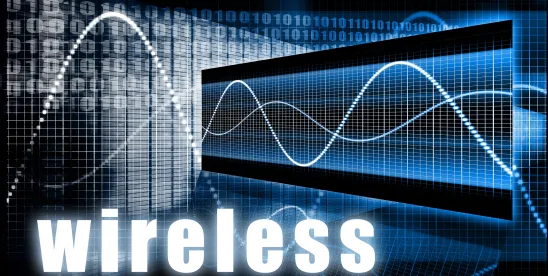The wireless industry has revolutionized the way we connect, from facilitating teleworking, distance learning, and telemedicine to allowing the American public to interact virtually in almost all other aspects of their daily lives. Leading policymakers – federal regulators and legislators – are making it a top priority to ensure that the wireless industry has the tools and resources it needs to keep pace with this evolving landscape. This blog provides monthly updates on actions by federal regulatory bodies responsible for communications policy and Congressional efforts to support wireless connectivity. And this month, we highlight the FCC’s proposed changes to its rules governing use of the 3.5 GHz band, which may lead to greater use of the spectrum nationwide for commercial wireless services.
Regulatory Actions and Initiatives
Spectrum
The FCC Endorses Changes to the Interference Model for 3.5 GHz Band Wireless Operations. A Public Notice was released by the FCC’s Wireless Telecommunications Bureau (“WTB”) and Office of Engineering and Technology (“OET”) on June 12, 2024, endorsing recommendations made by the National Telecommunications and Information Administration (“NTIA”) regarding the aggregate interference model that Spectrum Access System (“SAS”) administrators use to protect federal operations in the 3.5 GHz band from commercial wireless Citizens Broadband Radio Service (“CBRS”) users. NTIA recommended that the FCC permit certified SAS administrators to modify the existing model by: (i) adding Time Division Duplex and loading factors; (ii) accounting for clutter loss; and (iii) using a 50% confidence factor and 50% reliability factor for the propagation loss calculations. NTIA explained that SAS administrators that implement these changes – which would, among other things, reduce the size of Dynamic Protection Areas (“DPAs”) and the number of suspended operations when DPAs are activated – should be able to authorize service to approximately 72 million more people nationwide. SAS administrators will be permitted to apply the revised parameters only after final approval by the WTB and OET.
In a News Release accompanying the Public Notice, NTIA Administrator Alan Davidson commented that “[t]he Department of Defense has the airwaves it needs to carry out crucial missions while providing greater access for commercial 5G and high-speed Internet deployment” and that “[t]he changes outlined in NTIA’s letter will expand Internet access to more people across the country.” FCC Chairwoman Rosenworcel added that “[t]he CBRS dynamic spectrum sharing framework is already fertile ground for wireless innovation, and through collaboration with Department of Defense, NTIA, and stakeholders, we are expanding opportunities for reliable spectrum access while also ensuring that federal incumbents remain protected.”
Relatedly, on July 3, 2024, the WTB and OET released a Public Notice granting authority to five SAS administrators – Federated Wireless, Google, Key Bridge, RED Technologies, and Sony – to implement the changes to the existing aggregate interference model used to protect federal operations in the 3.5 GHz band. The WTB and OET, in collaboration with NTIA and the Department of Defense, reviewed the submissions made by these five SAS administrators and determined that they have demonstrated the ability to implement the modified aggregate interference model successfully, including system testing in a non-operational environment. Accordingly, the five SAS administrators are authorized to provide commercial service using the revised aggregate interference model.
The FCC Seeks Comment on Additional Changes to 3.5 GHz Band Rules. In addition to the Public Notice seeking input on NTIA’s recommendations, the FCC issued a News Release on June 13, 2024, announcing that it is proposing to update its rules for CBRS spectrum. In particular, the FCC would propose rules related to the protection of federal incumbent users and sunset rules related to the transition of grandfathered wireless broadband services in the 3.65-3.7 GHz band. The FCC would also seek comment on, among other things, whether to align 3.5 GHz protection methodologies with those in adjacent bands, revisit Environmental Sensing Capability (“ESC”) approval procedures, and facilitate the continued introduction of CBRS in areas outside of the contiguous United States.
The FCC Establishes Comment Deadlines for Proposed Rules to Prevent Certain Entities from Impacting Wireless Equipment Authorizations. The NPRM proposing new rules to help ensure the security and integrity of America’s communications supply chain through the equipment authorization program was published in the Federal Register on July 5, 2024, making comments and reply comments on the NPRM due September 3, 2024 and October 3, 2024, respectively. In the NPRM, the Commission, among other things, proposes to prohibit any Telecommunications Certification Body (“TCB”) or Measurement Facility (“Test Lab”) that is at least 10% owned or controlled by an entity on the FCC’s Covered List from participating in the Commission’s equipment authorization program. It also proposes to require TCBs and Test Labs to report information on any entity that holds a 5% or greater direct or indirect equity or voting interest in a TCB or Test Lab. Finally, the Commission seeks comment on the extent to which it should impose similar requirements and restrictions on entities included in lists developed by other Executive Branch agencies that identify national security risks.
The FCC Extends Temporary Portal-Based Protections for Federal Operations in the 3.5 GHz Band. On June 26, 2024, the WTB and OET released a Public Notice announcing the extension of the temporary arrangement among NTIA, the Department of Defense, and the Department of the Navy, allowing CBRS users to operate in the 3.55-3.65 GHz band in Hawaii before ESC sensors are locally deployed. The extension will last through December 31, 2024. In the Public Notice, the WTB and OET direct all certified SAS administrators to continue using the Telecommunications Advanced Research and Dynamic Spectrum Sharing System, or TARDyS3, portal to coordinate CBRS operations in the band, consistent with the terms in described in the September 2023 NTIA Letter and Public Notice.
The FCC Seeks Comment on Higher Power Limits for Wireless Vehicular Technologies in the 5.9 GHz Band. On June 7, 2024, NTIA filed a letter with the FCC in response to the Further Notice of Proposed Rulemaking regarding the use of cellular vehicle-to-everything (“C-V2X”) technologies in the 5.9 GHz band. NTIA proposed that the FCC modify its rules to allow higher power limits for C-V2X on-board units (“OBUs”) that are equipped with geofencing technology. NTIA suggested that geofencing technology would allow the operation of OBUs at a higher power level outside the coordination zones established to protect federal radiolocation services, provided the OBUs are programmed with geographic coordinates and a predetermined radius to ensure equivalent isotropically-radiated power levels are reduced in the relevant areas. OET subsequently released a Public Notice seeking comment on NTIA’s proposal, including the likelihood that manufacturers will incorporate geofencing technology given that it is optional, what performance gains or other benefits could be expected, and whether NTIA’s recommendations regarding power limits inside and outside coordination zones are appropriate. Comments on the Public Notice were due July 5, 2024.
Pleading Cycle Set on SpaceX Petition for Reconsideration. On June 14, 2024, a Petition for Reconsideration filed by Space Exploration Holdings, LLC (“SpaceX”) of the FCC’s Order adopting rules to permit Supplemental Coverage from Space (“SCS”) services was placed on Public Notice. The FCC’s Order, among other things, adopted a uniform aggregate out-of-band power flux density limit of -120 dBW/m2/MHz, applied at 1.5 meters above ground level, for satellite operators providing SCS services. SpaceX’s Petition, however, asserts that the FCC’s decision was improper and that the FCC should instead adopt band-specific limits that are tied to an interference protection threshold of -6 dB interference-to-noise ratio. SpaceX’s Petition was published in the Federal Register on June 20, making oppositions due July 5 and replies to oppositions due July 15.
Wireless Networks and Equipment
The FCC Releases a Draft Item that Would Propose a Mobile Unlocking Requirement. On June 27, 2024, the FCC released a draft Notice of Proposed Rulemaking (“NPRM”) that, if adopted, would seek comment on requiring all mobile wireless service providers to unlock mobile phones 60 days after the device is activated with the provider. The NPRM would ask if, in the event the FCC adopts a 60-day unlocking requirement, wireless service providers should be required to ensure that all new handsets activated on their networks are capable of automatic unlocking after two years. And, for both a 60-day and two-year automatic requirement, the FCC would seek comment on whether and how wireless service providers should notify their customers when their handset locking period has ended. If adopted, comments and reply comments on the FCC’s proposals will be due 30 and 60 days, respectively, after Federal Register publication, which has not yet occurred.
The FCC Seeks Comment on Implementation of its Voluntary Cybersecurity Labeling Program. On June 27, 2024, the Public Safety and Homeland Security Bureau (“PSHSB”), in conjunction with the Office of the Managing Director, released a Public Notice seeking comment on several components of the FCC’s voluntary cybersecurity labeling program for consumer wireless Internet of Things (“IoT”) devices (“IoT Labeling Program”). In particular, the Public Notice seeks comment on various implementation issues, such as PSHSB selection of the Cybersecurity Label Administrator and the Lead Administrator and the most effective mechanism for sharing costs associated with administering the program, which were left unaddressed by the IoT Labeling Order. Comments on the Public Notice will be due 30 and 45 days, respectively, after Federal Register publication, which has not yet occurred.
The FCC Proposes a Fine on a Seller of Wi-Fi Devices. On June 14, 2024, the FCC released a Notice of Apparent Liability (“NAL”) proposing a $367,436 forfeiture against ASUSTek Computer Inc. for apparently violating the Commission’s equipment authorization and marketing rules by selling two models of Wi-Fi devices that the company modified to operate above their authorized power levels without seeking authority from the FCC. The NAL is notable because the FCC warns that, in the future, it may change how it calculates forfeitures from the current per-model approach to a per-unit approach. That change, in turn, could result in generally higher forfeitures, especially in cases (like this one) where many units of only a few models are sold or imported. If the Commission modifies its approach to forfeiture calculation, which it asserts it has already the authority to do, the modification would principally impact equipment manufacturers. But it could also impact service providers as sellers or importers of RF devices. Nevertheless, FCC Commissioner Carr, in a separate statement suggested that a rulemaking proceeding would be required to make the modification.
The FCC Reminds Rip-and-Replace Support Recipients About Their Next Status Update and Releases its Fourth Program Report. The FCC’s Wireline Competition Bureau (“WCB”) released a Public Notice on June 7, 2024, reminding recipients of support from the FCC’s Secure and Trusted Communications Networks Reimbursement Program that they must file their next status update on July 8, 2024. In addition, on July 1, 2024, the WCB released its fourth Report required by Congress on the status of the Program. Based on the latest updates submitted by funding recipients, the Report notes that:
- The Fund Administrator and WCB have received 23,830 reimbursement claims across 122 of 126 applications, an increase from 10,847 claims from January’s Report.
- Approved reimbursement claims now total $693.18 million. This leaves approximately $1.268 billion of the $1.9 billion in appropriated funds left for reimbursement.
- Since January, nine Reimbursement Program funding recipients have filed their final rip-and-replace certifications. This brings the total number of final certifications to 14 of 126 total applications.
- Reimbursement Program funding recipients continue to indicate they are experiencing the same four main challenges to their rip-and-replace efforts as indicated in the last report: (i) lack of funding (64% of recipients, up from 47% in January); (ii) supply chain delays (33% of recipients, down from 41% in January); (iii) labor shortages (32% of recipients, increased from 14% in both January and July 2023); and (iv) weather impacts (15% of recipients, increased from 10% in January).
The WCB’s next report is due to Congress by December 27, 2024.





 />i
/>i

